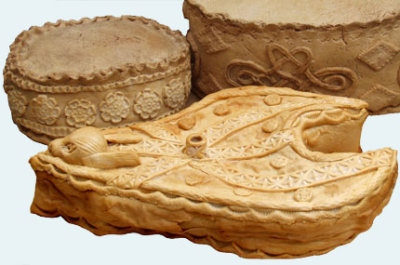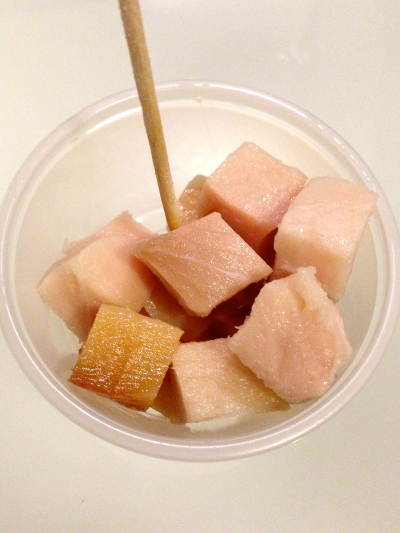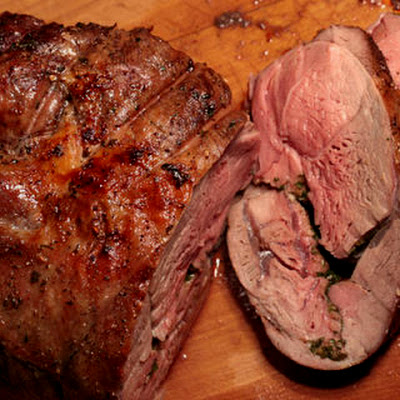
Real Traditional Mince Pies
- Details
- Category: Food & Drink
- Created on Wednesday, 09 December 2015 09:06
- Written by Northern Living
 You know those ‘Traditional Mince Pies’ we all see in the supermarkets at this time of year? There should be a trading standards case against anybody who has the audacity to use the word Traditional in relation to the mince pies presently on offer! Below is a real traditional recipe from “The English Housewife” published in 1615. Not a great deal of comparison to the icing sugar dusted mass-manufactured oddities in aluminium foil cases, I think you’ll agree:-
You know those ‘Traditional Mince Pies’ we all see in the supermarkets at this time of year? There should be a trading standards case against anybody who has the audacity to use the word Traditional in relation to the mince pies presently on offer! Below is a real traditional recipe from “The English Housewife” published in 1615. Not a great deal of comparison to the icing sugar dusted mass-manufactured oddities in aluminium foil cases, I think you’ll agree:-
“Take a Legge of Mutton, and cut the best of the flesh from the bone, and parboyl it well then put to it three pound of the best Mutton suet & shred it very small; then spread it abroad, and fashion it with Salt Cloves and Mace: then put in good store of Currants, great Raisins and Prunes clean washed and picked a few Dates sliced, and some Orenge-pils sliced ; then being all well mixt together, put it into a coffin, or into divers coffins, and so bake them and when they are served up, open the lids and strow store of Sugar on the top of the meat and upon the lid. And in this sort you may also bake Beef or Veal, onely the Beef would not be parboyld, and the Veal will ask a double quantity of Suet."
From Gervase Markham The English Housewife, (London: 1615)
A coffin isn’t the wooden box you to granny to rest in. It’s a pastry case!
Bacon Badger
- Details
- Category: Food & Drink
- Created on Sunday, 06 December 2015 16:02
- Written by Northern Living
 Badger, surely not! Bacon Badger its a traditional recipe from Buckinghamshire which we've borrowed and enhanced slightly. Named after the appearance of the large stuffed roll, suffice it to say that no real badgers are harmed during the preparation of this recipe.
Badger, surely not! Bacon Badger its a traditional recipe from Buckinghamshire which we've borrowed and enhanced slightly. Named after the appearance of the large stuffed roll, suffice it to say that no real badgers are harmed during the preparation of this recipe.
Ingredients
The Pastry
225 Grams Self raising flour
1 pinch Salt and freshly milled black pepper
100 Grams Suet
1 heaped tbsp Fresh parsley Chopped
8 tbsps Cold water
For the filling
1 large Badger – Joking!
400 Grams Gammon Cubed
1 large White onion Cubed
1 large Potato Cubed
2 cloves of garlic crushed
6 Handfuls Fresh sage leaves Chopped
1 handful Fresh parsley Chopped
1 pinch Black mustard seeds crushed
Method
(1) To make the suet pastry, simply sift the flour and salt and pepper into a large mixing bowl. Add the suet and chopped parsley and adding the water bring it all together to form a nice dough. Cover and chill.
(2) In a large roasting tin, add diced gammon, onions, potato, garlic, the freshly chopped herbs and the crushed black mustard seeds, combine. Roast in a moderate oven for 30 minutes, remove and cool slightly.
(3) Onto a well floured worktop roll out the pastry into a generous rectangle. Fill with the mixture, wetting the edges with water, roll up like a large pasty and seal together. Place a tea towel on the worktop and onto that place a sheet of foil with a sheet of buttered greaseproof paper on top and place your badger in the middle. Roll it all up and tie the ends with string.
(4) Steam for 1 hrs 30 mins over a pan of boiling water. Then remove tea towel and open foil and grease proof to reveal the feast. Finish off by baking at 180c, to give the pastry a golden crust, for 20 mins.
Strange Sunday Lunches - Iceland - Hákarl
- Details
- Category: Food & Drink
- Created on Sunday, 06 December 2015 10:43
- Written by Northern Living
 Hákarl is a food from Iceland. It is a Greenland or basking shark which has been cured with a particular fermentation process and hung to dry for 4-5 months. Hákarl has a very particular ammonia-rich smell and fishy taste. It is, quite literally, rotten shark meat. It was traditionally served during the mid-winter festivities know as Thorrablot but people visiting Iceland as tourists are often presented with Hákarl as a Sunday lunch offering. This may indicate that the Icelander either have a very mischievous sense of humour, or they are simply inhospitable and are determined to persuade visitors not to return!!!!
Hákarl is a food from Iceland. It is a Greenland or basking shark which has been cured with a particular fermentation process and hung to dry for 4-5 months. Hákarl has a very particular ammonia-rich smell and fishy taste. It is, quite literally, rotten shark meat. It was traditionally served during the mid-winter festivities know as Thorrablot but people visiting Iceland as tourists are often presented with Hákarl as a Sunday lunch offering. This may indicate that the Icelander either have a very mischievous sense of humour, or they are simply inhospitable and are determined to persuade visitors not to return!!!!
Preparation
(1) Wash and gut your shark.
(2) Bury the shark in gravel. Mark the location with a pile on stones. Unearth it six to eight weeks later.
(3) Allow the shark to cure in the open air for another two months.
(4) Cut off the thick brown crust which has grown around the shark. The remaining slab of flesh should smell somewhat like ammonia.
(5) Eat the white flesh inside, along with a drink of Brennivín, an aquavit-like schnapps flavored with caraway.
An Anglo-Saxon seasonal Feast
- Details
- Category: Food & Drink
- Created on Friday, 04 December 2015 09:12
- Written by Northern Living
 In Saxon times autumn and early winter were the time when surplus cattle were slaughtered for their meat at the end of their first or second year, or as their productivity as breeding stock or their strength to pull ploughs declined. Surplus young sheep were also slaughtered during the autumn and additional meat sources coming from older breeders that would mainly have been kept for their wool. Older fowl were also killed as keeping them alive through the winter months was costly in grain with no reward of eggs.
In Saxon times autumn and early winter were the time when surplus cattle were slaughtered for their meat at the end of their first or second year, or as their productivity as breeding stock or their strength to pull ploughs declined. Surplus young sheep were also slaughtered during the autumn and additional meat sources coming from older breeders that would mainly have been kept for their wool. Older fowl were also killed as keeping them alive through the winter months was costly in grain with no reward of eggs.
So what might a seasonal feast have included? Here are a few known recipes from the era. Food wasn’t all pottage and mouldy bread in the 6th century, the Anglo-Saxons had wide trading networks, so the ingredients have quite a Mediterranean feel.
Stuffed chicken
3½ lb (1.6kg) chicken
4 hard-boiled eggs
2 medium onions
½ pt (275 ml) chicken stock
1 small bunch of parsley
1-3 tbs (30-45 ml) lard
salt & pepper
Prepare the chicken for stuffing and for spit or oven roasting. Separate the egg whites and yolks. Slice the onions thinly. Bring the stock to the boil, and blanch the onions and parsley for 2-3 minutes. Remove the parsley and cook the onions until soft. Drain, reserving the remaining stock. Cool.
Cut off the parsley stalks and chop the leaves with the egg yolks, lard and seasoning. Add the onion. Stuff the chicken with the mixture, then truss it. Roast the chicken in the usual way, with the reserved stock in the drip tray or roasting tin. Use it to baste the chicken and to make a thin or slightly thickened gravy with the pan juices and some extra stock. If wished, garnish with the egg whites, chopped, and a little extra parsley.
Roast Mutton
Ingredients 1 leg mutton (4-5 lbs)
Generous slosh of cheap red wine
3-6 cloves garlic, peeled
4 juniper berries
Several sprigs of rosemary
Salt and pepper
Gravy browning (check packet for amount) or 2 teaspoons (30 ml) cornflour
Method You can ask your butcher to bone the mutton, which will make it easier to carve. This is also worth doing if you want to use the leg bone to make knife handles or whatever, because roasting would make the bone brittle. You can stuff the cavity with a mix of chopped prunes, hazelnuts, finely chopped onions and fresh herbs. Remember to allow for any stuffing when calculating the cooking time.
Cut slots in the meat with a sharp knife. Push the garlic, juniper berries and rosemary into these slots. How much of each you use depends on your taste; too much juniper will make it bitter, and not everybody is mad about garlic. Heat the oven to 150o C (300o F). Put the meat into a roasting dish. Sprinkle it with salt and pepper and then slosh wine over it. Put the lid on the roasting dish, or cover the joint with aluminium foil.
Roast the meat for 40 minutes per lb (450 g): if necessary, add more wine during cooking to keep the dish from drying out. Remove the lid or foil for the last half hour of cooking. When it's cooked, put the meat onto a carving platter to rest while you make gravy with the cooking juices.
To make the gravy, put the roasting dish on the hob and add some water (or cooking juices from vegetables). You should get nearly a pint of gravy. Thicken the gravy with gravy browning, or mix the cornflour with a little water until smooth, and stir this into the gravy. Keep stirring until the gravy has thickened. Strain it into a warmed jug, spoon the fat off the top of the gravy and serve
Curd flan
‘Take nessh chese, and pare it clene, and grind hit in a morter small, and drawe yolkes and white of egges thorgh a streynour, and cast there-to, and grind hem togidre; then cast thereto honey, butter and salt, and put together in a coffyn of faire paast, and lete bake ynowe, and then serue it forthe.’
‘nessh chese’ is fresh soft curd cheese
‘coffyn of faire paast’ is a light pastry case.
The Wellington Hotel Howden
- Details
- Category: Food & Drink
- Created on Wednesday, 02 December 2015 11:59
- Written by Northern Living
 Neil and all the staff at the Wellington Hotel extend a warm welcome to all our guests. The Wellington Hotel Serves Quality Old Mill Traditional Ales in a friendly, comfortable local environment. Located in the heart of Howden, East Yorkshire, the Wellington Hotel is popular with locals and visitors from throughout the UK. We have 10 high quality En Suite rooms available from as little as £34.95 per night and an upstairs function room, comfortably seating 50 guests which is ideal for business functions, meeting and family events such as Christenings, Wakes and Smaller Wedding Parties.
Neil and all the staff at the Wellington Hotel extend a warm welcome to all our guests. The Wellington Hotel Serves Quality Old Mill Traditional Ales in a friendly, comfortable local environment. Located in the heart of Howden, East Yorkshire, the Wellington Hotel is popular with locals and visitors from throughout the UK. We have 10 high quality En Suite rooms available from as little as £34.95 per night and an upstairs function room, comfortably seating 50 guests which is ideal for business functions, meeting and family events such as Christenings, Wakes and Smaller Wedding Parties.
Food service time are as follows:-
- Monday-Friday 11.30am-3.00pm & 5.00pm-8.30pm,
- Saturday 11.30am-3.00pm & 5.00pm-9.00pm,
- Sunday Carvery 12.00pm-3.00pm, evening menu available from 3.00pm-8.30pm.
All dishes are freshly prepared by their head chef Karen Makey and her team with fresh produce sourced locally wherever possible. We also have a daily specials and sweets menu available on request.
http://www.wellingtonhotelhowden.co.uk
31 Bridgegate, Howden, East Yorkshire. DN14 7JG
Tel. 01430 430258

